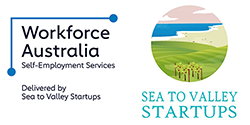In the diverse world of business startups, from tourism and recreation to care, education, and beyond, the key to success often lies in one critical phase: testing and validating your Minimum Viable Product (MVP). But when your MVP is an experience — be it an exhilarating adventure park day, a rejuvenating beauty treatment, or an educational workshop — the stakes and strategies shift intriguingly. Let’s dive into how you can effectively test and validate experiential MVPs, ensuring you resonate with your intended audience and set the stage for a thriving business.
The Importance of Getting It Right
For startups, the MVP phase is not just about proving a concept; it’s about learning what your customers truly value. This is especially crucial in sectors like tourism, sports and recreation, aged and disability care, hair and beauty, and education, where experiences directly impact customer satisfaction and loyalty.
Leveraging Family and Friends
Start small but insightful by inviting family and friends to test your experience. This familiar circle can offer initial, candid feedback on key aspects such as customer experience, timing, location, theme, price, suitability, and what might be popular. Remember, the goal is to gauge the overall appeal and smooth out any glaring issues before reaching out to a broader audience.
Key Considerations for Feedback
- Customer Experience: Focus on the ease of access, enjoyment, and any unique selling points of your experience. What emotions do participants feel during and after the experience? what do they think about it?
- Timing and Location: Are there specific times of the day, week, or year when your experience is more appealing? Is the location convenient and conducive to the intended experience? Are there practical things such as parking, access to toilets, considerations for people with disabilities?
- Themes and Suitability: Ensure your themes resonate with your target audience and that the experience is appropriate for the age group or demographic you’re targeting.
- Price: Finding the right price point is crucial. It must reflect the value of the experience while remaining affordable for your target market and making you a margin too.
- Popularity: Pay attention to what aspects of the experience people are most excited about. This can guide future marketing and development efforts.
Capturing and Acting on Feedback
- Active Listening: Don't use surveys and formal feedback forms is possible, engage in conversations. People often share more in dialogue, revealing insights you might not have considered.
- Observation: Watch how participants interact with each experience. Their behavior and body language can provide a wealth of information about what works and what doesn’t.
- Managing Constructive Feedback: Not all feedback will be positive, but negative feedback is gold dust for improvement. Approach it with an open mind and a commitment to evolve.
- Unexpected Discoveries: Sometimes, feedback will throw you a curveball — an aspect of your experience that unexpectedly delights or disappoints. Be ready to pivot or iterate based on these discoveries.
The Unexpected and Shifting Perspectives
The path of testing and validating an experiential MVP is filled with surprises. Participants might find joy in elements you deemed secondary or suggest uses for your experience that you hadn’t envisioned. Embrace these moments. They represent unexplored opportunities.
Similarly, constructive criticism is a gateway to excellence. It challenges your preconceptions and encourages a mindset shift. What you considered a fixed feature of your experience might turn out to be its weakest link, or vice versa. The flexibility to adapt based on user feedback is a superpower in the MVP phase.
Testing and validating an experiential MVP is a dynamic, insightful process. By engaging directly with your initial audience and carefully considering their feedback, you can refine your experience to better match their desires and expectations. Remember, the goal is to create something not just viable but valuable. In doing so, you lay the groundwork for a business that doesn’t just exist but thrives and grows, meeting and surpassing the wants and needs of its audience.
In the Sea to Valley startup landscape, where innovation meets diversity, your MVP is your first step toward making a lasting impact. Treat it as an ongoing conversation with your future customers, and let their voices guide you to success.

